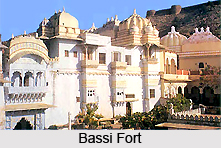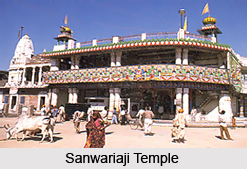 Chittorgarh is surrounded by several charming places of interest around it. These places comprise of small settlements, temples and wildlife sanctuaries. For these excursion tours transportation is easily available. Though the beauty of Chittorgarh is unprecedented yet the sites situated around the district are equally significant, both historically and religiously. The presence of several Hindu shrines proves that the residents of the adjoining areas of Chittor were predominantly Hindus.
Chittorgarh is surrounded by several charming places of interest around it. These places comprise of small settlements, temples and wildlife sanctuaries. For these excursion tours transportation is easily available. Though the beauty of Chittorgarh is unprecedented yet the sites situated around the district are equally significant, both historically and religiously. The presence of several Hindu shrines proves that the residents of the adjoining areas of Chittor were predominantly Hindus.
There are little towns around the city of Chittorgarh that are ideal for short trips.
Nagari : It is located at a distance of 18 kilometers north of Chittor. In earlier times it was known as Madhyamika. In the Mauryan times it was a flourishing region. As time passed by the reign of the town passed on to different rulers. It is liked by the tourists because of its serenity. Even ruins have their own charm.
Bassi: The Bassi Fort is a popular tourist spot. With a magnificent fort and a reservoir tourists throng this place in the Chittorgarh district. The city of Chittor is 25 kilometers away from this settlement.
Bijaipur: The castle is the striking monument of this town. It was built in the 16th century. Today, however, the castle has been converted to a heritage hotel. Yet tourists are allowed to witness the grandeur of this castle. The architectural style that the fort reflects is a blend of Mughal and the Gothic styles.
 Baroli: Several temples and waterfalls adorn the city of Baroli. These temples are well known for their architectural grandeur. A temple dedicated to lord Shiva is exquisitely carved.
Baroli: Several temples and waterfalls adorn the city of Baroli. These temples are well known for their architectural grandeur. A temple dedicated to lord Shiva is exquisitely carved.
Sanwariaji Temple: It is situated on the Chittor-Udaipur Highway. Dedicated to Lord Krishna it is frequently visited by devotees. The temple is located at a distance of 40 kilometers from Chittorgarh.
Bhainsrorgarh Wildlife Sanctuary: This sanctuary lies amidst the lush greenery of Bhainsrorgarh. Several invaluable archaeological remains have also been excavated from here. It lies at a distance of 90 kilometers from Chittorgarh.
Sitamata Sanctuary: It is located in the midst of Aravali and Vindhyachal ranges. It is the only place where buildings of teak trees are found. Several kinds of animals are found here. The wildlife in this sanctuary comprise of leopard, jackal, wild bear, nilgai, spotted deer and others.
Other interesting attractions near Chittorgarh include Mati Kundiya temple, Menal, Gotmeshwar, Joganiya Mata and Kailger Mahadev.



















